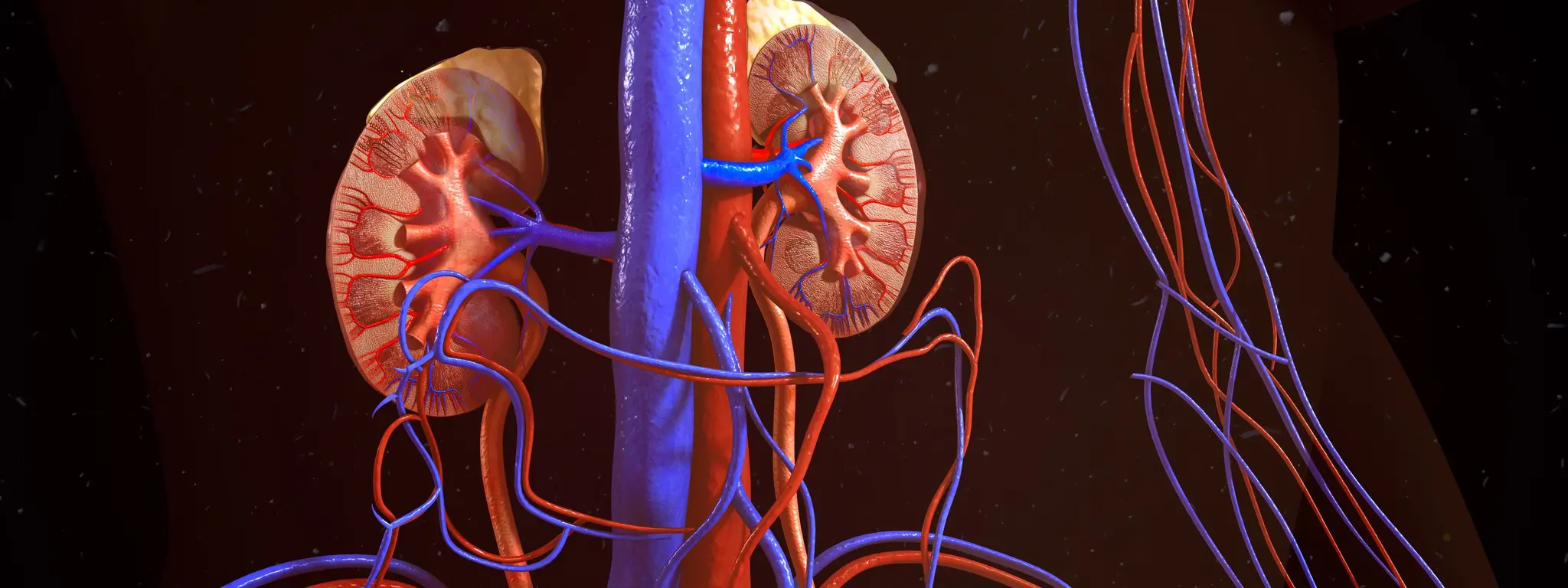Renal Hypertension

Renal Hypertension
Renal hypertension (also called renovascular hypertension) is a type of high blood pressure caused by narrowing or blockage of the arteries that supply blood to the kidneys (renal arteries). This condition reduces blood flow to the kidneys, triggering a cascade of hormonal responses that lead to elevated blood pressure.
Causes of Renal Hypertension
1.Renal Artery Stenosis (RAS)
- Atherosclerosis (hardening of the arteries due to plaque buildup) – Most common in older adults.
- Fibromuscular Dysplasia (FMD) – Abnormal cell growth in renal artery walls, often affecting younger women.
2.Chronic Kidney Disease (CKD)
- Impaired kidney function leads to sodium retention and overactivation of the renin-angiotensin-aldosterone system (RAAS), raising blood pressure.
Symptoms of Renal Hypertension
- Severe or resistant hypertension (high BP despite multiple medications)
- Sudden worsening of previously controlled hypertension
- Kidney dysfunction (elevated creatinine, proteinuria)
- Headaches, blurred vision, or dizziness
- Flank pain (if caused by a renal artery dissection)
Diagnosis of Renal Hypertension
1. Blood and Urine Tests
- Serum creatinine & eGFR (to assess kidney function)
- Urinalysis (checking for proteinuria)
- Plasma renin activity & aldosterone levels (if RAAS overactivation is suspected)
2. Imaging Studies
- Doppler Ultrasound – Checks blood flow velocity in renal arteries.
- CT Angiography (CTA) or MR Angiography (MRA) – Provides detailed images of renal artery blockages.
- Renal Arteriography (Gold Standard) – Invasive but most accurate for diagnosing stenosis.
3. Functional Tests
- Captopril Renal Scintigraphy – Measures kidney blood flow before and after an ACE inhibitor.
Treatment Options for Renal Hypertension
1. Medications
- ACE Inhibitors (e.g., Lisinopril) or ARBs (e.g., Losartan) – First-line for RAS but must be used cautiously in bilateral stenosis (risk of kidney failure).
- Calcium Channel Blockers (e.g., Amlodipine) – Alternative if ACE/ARBs are contraindicated.
- Diuretics (e.g., Hydrochlorothiazide) – Help reduce fluid retention.
- Beta-blockers (e.g., Metoprolol) – Used if other medications are insufficient.
2. Revascularization Procedures
- Renal Artery Angioplasty & Stenting – Opens narrowed arteries (effective for fibromuscular dysplasia).
- Surgical Bypass – Rarely done, only for complex cases.
3. Lifestyle Modifications
- Low-sodium diet (<2g/day)
- Regular exercise & weight management
- Smoking cessation & alcohol moderation
Complications if Untreated
- Kidney failure (due to prolonged ischemia)
- Heart disease & stroke (from uncontrolled hypertension)
- Aortic dissection or aneurysm (in severe cases)
Prognosis
- Early detection and treatment can reverse hypertension in some cases.
- Fibromuscular dysplasia has a better prognosis than atherosclerosis-related RAS.
- Without treatment, renal hypertension can lead to end-stage renal disease (ESRD).
